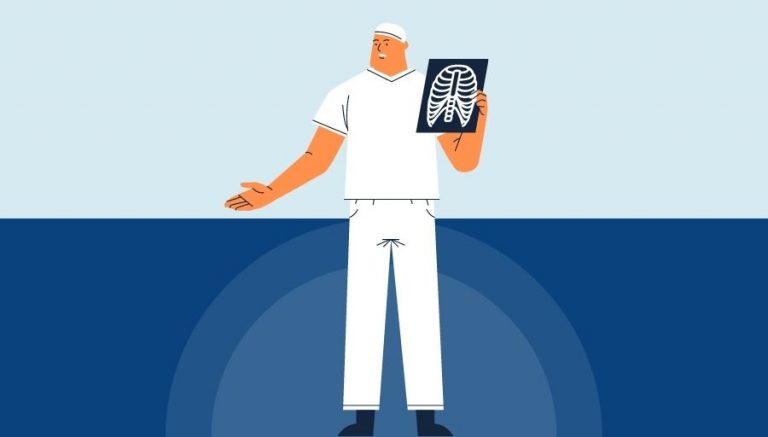How To Use CPT Code 88348
CPT 88348 describes the use of a diagnostic electron microscope, specifically a conventional transmission electron microscope (CTEM), to evaluate a patient’s specimen such as kidney biopsies, muscles, or tumors. This article will cover the description, procedure, qualifying circumstances, appropriate usage, documentation requirements, billing guidelines, historical information, similar codes and billing examples.
1. What is CPT Code 88348?
CPT 88348 can be used to describe the procedure in which a diagnostic electron microscope, specifically a conventional transmission electron microscope (CTEM), is used to evaluate a patient’s specimen. This procedure involves passing electrons through the specimen, which either scatters or absorbs the electrons, resulting in a high-resolution black and white image. The analyst prepares a thin section of biopsy material embedded in resin or fresh tissue, and the CTEM produces a detailed black and white image of the sample surface.
2. Official Description
The official description of CPT code 88348 is: ‘Electron microscopy, diagnostic.’
3. Procedure
- The analyst performs the technical steps to examine the patient’s specimen using a conventional transmission electron microscope (CTEM).
- A thin section of biopsy material embedded in resin or fresh tissue is prepared for analysis.
- The CTEM passes electrons through the specimen, which scatters or absorbs the electrons.
- A high-resolution black and white image of the sample surface is produced.
4. Qualifying circumstances
CPT 88348 is used when clinicians order this test to evaluate various disorders, such as asbestosis, ciliary dyskinesia, cancer, and infections. It is not limited to testing for specific conditions. The procedure involves the use of a conventional transmission electron microscope (CTEM) to examine the patient’s specimen.
5. When to use CPT code 88348
CPT code 88348 should be used when a diagnostic electron microscope, specifically a conventional transmission electron microscope (CTEM), is used to evaluate a patient’s specimen. It is appropriate for cases where a high-resolution black and white image of the sample surface is required for diagnostic purposes.
6. Documentation requirements
To support a claim for CPT 88348, the documentation should include:
- Reason for ordering the test and the specific disorder being evaluated
- Details of the specimen being analyzed
- Confirmation that a conventional transmission electron microscope (CTEM) was used
- Description of the procedure performed
- Results and interpretation of the analysis
- Signature of the analyst performing the procedure
7. Billing guidelines
When billing for CPT 88348, ensure that the procedure involves the use of a diagnostic electron microscope, specifically a conventional transmission electron microscope (CTEM). It is important to follow the specific documentation requirements and guidelines provided by the payer. Additionally, be aware of any specific coding rules or modifiers that may apply when reporting CPT 88348.
8. Historical information
CPT 88348 was added to the Current Procedural Terminology system on January 1, 1990. The code was later changed on January 1, 2015, to its current description of ‘Electron microscopy, diagnostic.’
9. Examples
- An analyst using a conventional transmission electron microscope (CTEM) to evaluate a kidney biopsy specimen for the presence of cancer.
- A clinician ordering a diagnostic electron microscopy procedure to examine a muscle tissue sample for abnormalities associated with a suspected neuromuscular disorder.
- An analyst performing electron microscopy on a tumor specimen to aid in the diagnosis of a patient’s cancer type.
- A patient undergoing electron microscopy to evaluate a lung biopsy for the presence of asbestos fibers, indicating asbestosis.
- A clinician ordering electron microscopy to examine a tissue sample for evidence of infection, such as viral particles or bacteria.
- An analyst using a conventional transmission electron microscope (CTEM) to evaluate a skin biopsy specimen for the presence of abnormal cellular structures associated with a specific dermatological condition.
- A clinician ordering electron microscopy to examine a liver biopsy specimen for signs of a specific liver disease, such as hepatitis.
- An analyst performing electron microscopy on a lymph node biopsy specimen to aid in the diagnosis of a patient’s lymphoma type.
- A patient undergoing electron microscopy to evaluate a bone marrow biopsy for the presence of abnormal cellular structures associated with a suspected hematological disorder.
- A clinician ordering electron microscopy to examine a brain tissue sample for the presence of abnormal protein aggregates associated with a neurodegenerative disease.



